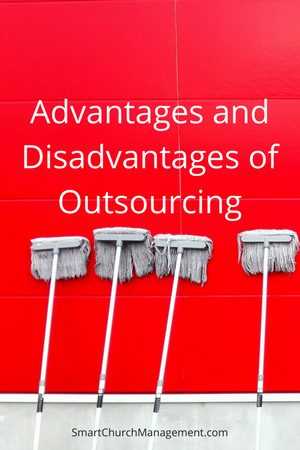Outsourcing is a business strategy that moves some of an organization’s functions, processes, activities and decision responsibility from within an organization to outside providers.
This is done through negotiating contract agreements with a vendor who takes on the responsibility for the production process, people management, quality, customer service and key asset management of the function.
The process can greatly reduce fixed overhead costs of an organization.
Why do organizations outsource?
Outsourcing allows organizations to focus on their core business and can create a competitive advantage by reducing operational costs.
The beauty of outsourcing is you can outsource an entire function or only a part of it.
As an example, you can outsource the network management oversight of an IT system but keep the end-user support in-house.
This can provide an organization with a good balance of on-site support for employees.
Organizations use outsourcing as a strategic initiative to improve customer service, quality and reduce costs.
Outsourcing can be a permanent or temporary arrangement to bridge the gap in staffing, to learn better quality techniques or improvement of faulty product design.
When looking for outsource opportunities, an organization should look at potential areas and each component within that area to determine if part or all of that function should be outsourced.
Different industries outsource different aspects of their businesses, but some common operational functions that get outsourced are:
- Manufacturing
- Order Fulfillment
Advantages of Outsourcing
Cost Savings
There can be significant cost savings when a business function is outsourced. Employee compensation costs, office space expenses and other costs associated with providing a work space or manufacturing setup are eliminated and free up resources for other purposes.
Focus on Core Business
Outsourcing allows organization to focus on their expertise and core business. When organizations go outside their expertise, they get into business functions and processes that they may not be as knowledgeable about and could potentially take away from their main focus.
An example of this is when a grocery store decides to add a florist to their operation. If too much focus is put on that part of the business they lose focus of the core business which is grocery.
Improved Quality
Improved quality2 can be achieved by using vendors with more expertise and more specialized processes.
An example of this would be contracting out a cleaning service. An outside service would have the resources for hiring, proper training and facility inspections that may not be available if the function were kept in-house.
Customer Satisfaction
The advantage of having a vendor contract is they are bound to certain levels of service and quality.
|
|
An example of this is if your IT function is outsourced and the technician calls in sick, it is the vendor’s responsibility to find someone to replace them and meet your support needs.
Operational Efficiency
Outsourcing gives an organization exposure to vendor specialized systems. Specialization provides more efficiency that allows for a quicker turnaround time and higher levels of quality.
Disadvantages of Outsourcing
Quality Risk
Outsourcing can expose an organization to potential risks and legal exposure.
As an example, if a car is recalled for faulty parts and that part was outsourced, the car manufacturer carries the burden of correcting the potentially damaged reputation of the car maker.
While the vendor would need to make good on the faulty product by contract, the manufacturer still has the black eye from the incident and carries the burden of correcting the negative public perception.
Quality Service

Unless a contract specifically identifies a measurable process for quality service reporting, there could be a poor service quality experience. Some contracts are written to intentionally leave service levels out to save on costs.
Language Barriers
If a customer call center is outsourced to a country that speaks a different language, there may be levels of dissatisfaction for customers dealing with the language barriers of someone with a strong accent.
Employee/Public Opinion
There can be negative perceptions with outsourcing and the sympathy of lost jobs. This needs to be managed with sensitivity and grace.
Organizational Knowledge
An outsourced employee may not have the same understanding and passion for an organization as a regular employee. There is the potential that an outsourced employee will come in contact with customers and not be as knowledgeable of the organization, resulting in a negative customer experience.
Labor Issues
Organized labor in the United States has very strong feelings about outsourcing to other countries that have a less standard of living and worse working conditions. This viewpoint can affect how the workforce responds to outsourcing and can affect their daily productivity.
Legal Compliance and Security
It is important that issues regarding legal compliance and security be addressed in formal documentation. Processes that are outsourced need to be managed to ensure there is diligence with legal compliance and system security.
An example of this is outsourcing the IT function and having an outsourced employees use their access to confidential customer data for their own gain.
Employee Layoffs
Outsourcing commonly results in the need to reduce staffing levels. Unless it can be planned through attrition, layoffs are inevitable. This is difficult at best and if not managed appropriately, can have a negative impact on remaining employees.
Finally, when researching vendors for outsourcing be sure to think through your specific needs and get at least three Requests for Proposals (RFP) to ensure you are getting the best value for your dollar.
Does your organization outsource any of its functions?
Original article and pictures take smartchurchmanagement.com site
Комментариев нет:
Отправить комментарий